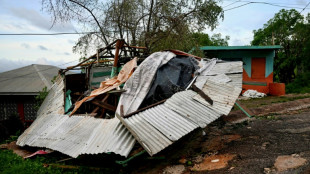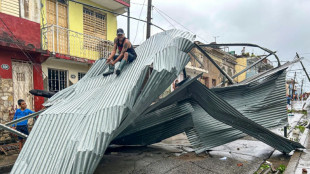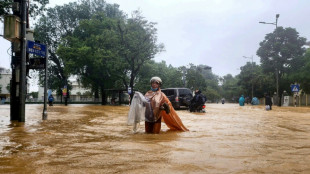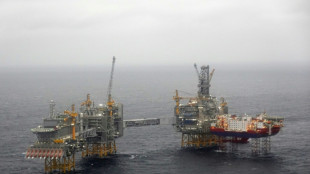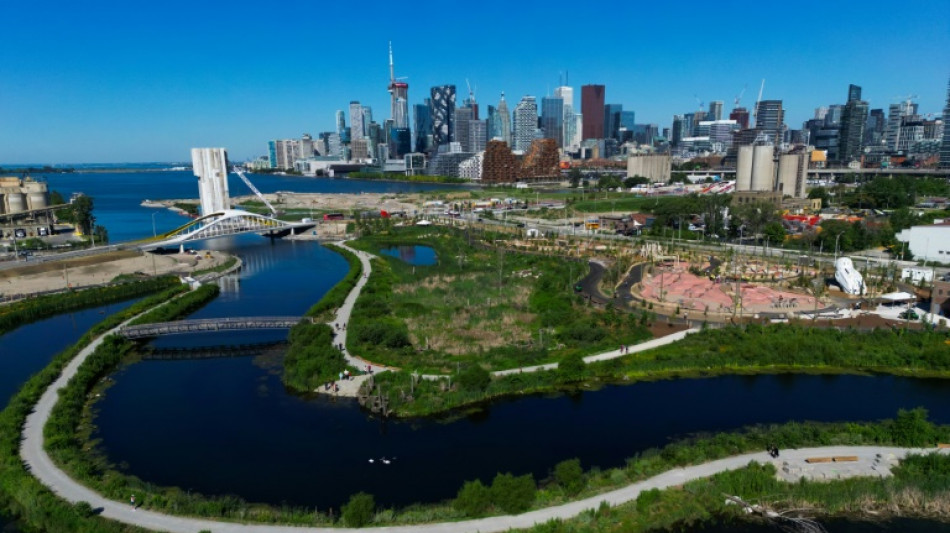
-
 Asia markets fluctuate as investors mull Trump-Xi talks
Asia markets fluctuate as investors mull Trump-Xi talks
-
Trump, Xi ease fight on tariffs, rare earths

-
 Volkswagen posts 1-billion-euro loss on tariffs, Porsche woes
Volkswagen posts 1-billion-euro loss on tariffs, Porsche woes
-
'Fight fire with fire': California mulls skewing electoral map

-
 Fentanyl, beans and Ukraine: Trump hails 'success' in talks with Xi
Fentanyl, beans and Ukraine: Trump hails 'success' in talks with Xi
-
'Nowhere to sleep': Melissa upends life for Jamaicans
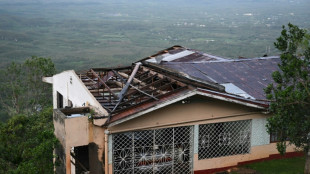
-
 Irish octogenarian enjoys new lease on life making harps
Irish octogenarian enjoys new lease on life making harps
-
Tanzania blackout after election chaos, deaths feared

-
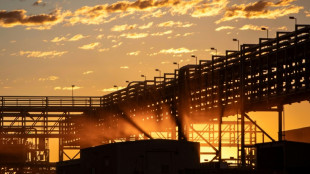 G7 meets on countering China's critical mineral dominance
G7 meets on countering China's critical mineral dominance
-
Trump hails tariff, rare earth deal with Xi

-
 Court rules against K-pop group NewJeans in label dispute
Court rules against K-pop group NewJeans in label dispute
-
India's Iyer says 'getting better by the day' after lacerated spleen

-
 Yesavage fairytale carries Blue Jays to World Series brink
Yesavage fairytale carries Blue Jays to World Series brink
-
Bank of Japan keeps interest rates unchanged
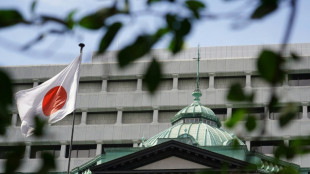
-
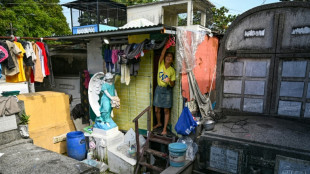 Impoverished Filipinos forge a life among the tombstones
Impoverished Filipinos forge a life among the tombstones
-
Jokic posts fourth straight triple-double as Nuggets rout Pelicans

-
 UN calls for end to Sudan siege after mass hospital killings
UN calls for end to Sudan siege after mass hospital killings
-
Teenage Australian cricketer dies after being hit by ball

-
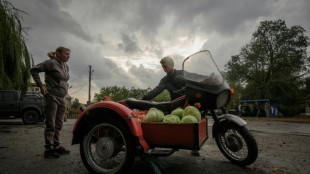 As Russia advances on Kupiansk, Ukrainians fear second occupation
As Russia advances on Kupiansk, Ukrainians fear second occupation
-
Trade truce in balance as Trump meets 'tough negotiator' Xi

-
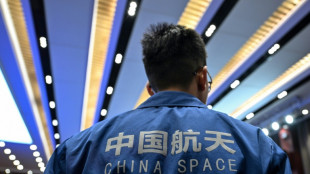 China to send youngest astronaut, mice on space mission this week
China to send youngest astronaut, mice on space mission this week
-
Yesavage gem carries Blue Jays to brink of World Series as Dodgers downed

-
 With inflation under control, ECB to hold rates steady again
With inflation under control, ECB to hold rates steady again
-
Asia stocks muted with all eyes on Trump-Xi meeting

-
 Personal tipping points: Four people share their climate journeys
Personal tipping points: Four people share their climate journeys
-
Moto3 rider Dettwiler 'no longer critical' after crash: family

-
 US economy in the dark as government shutdown cuts off crucial data
US economy in the dark as government shutdown cuts off crucial data
-
Trump orders nuclear testing resumption ahead of Xi talks

-
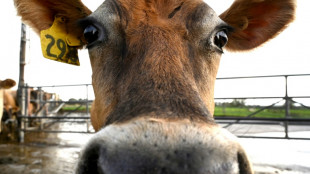 'Utter madness': NZ farmers agree dairy sale to French group
'Utter madness': NZ farmers agree dairy sale to French group
-
Samsung posts 32% profit rise on-year in third quarter

-
 30 years after cliffhanger vote, Quebec separatists voice hope for independence
30 years after cliffhanger vote, Quebec separatists voice hope for independence
-
Taxes, labor laws, pensions: what Milei wants to do next

-
 South Sudan's blind football team dreams of Paralympic glory
South Sudan's blind football team dreams of Paralympic glory
-
US says 4 killed in new strike on alleged Pacific drug boat
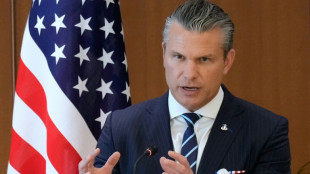
-
 What we do and don't know about Rio's deadly police raid
What we do and don't know about Rio's deadly police raid
-
'They slit my son's throat' says mother of teen killed in Rio police raid

-
 Arteta hails 'special' Dowman after 15-year-old makes historic Arsenal start
Arteta hails 'special' Dowman after 15-year-old makes historic Arsenal start
-
Google parent Alphabet posts first $100 bn quarter as AI fuels growth

-
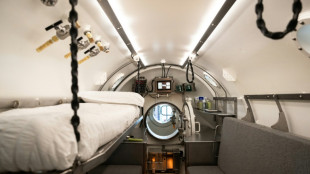 Underwater 'human habitat' aims to allow researchers to make weeklong dives
Underwater 'human habitat' aims to allow researchers to make weeklong dives
-
Maresca slams Delap for 'stupid' red card in Chelsea win at Wolves

-
 'Non-interventionist' Trump flexes muscles in Latin America
'Non-interventionist' Trump flexes muscles in Latin America
-
Slot defends League Cup selection despite not meeting 'Liverpool standards'

-
 'Poor' PSG retain Ligue 1 lead despite stalemate and Doue injury
'Poor' PSG retain Ligue 1 lead despite stalemate and Doue injury
-
Liverpool crisis mounts after League Cup exit against Palace

-
 Kane scores twice as Bayern set European wins record
Kane scores twice as Bayern set European wins record
-
Radio Free Asia suspends operations after Trump cuts and shutdown

-
 Meta shares sink as $16 bn US tax charge tanks profit
Meta shares sink as $16 bn US tax charge tanks profit
-
Dollar rises after Fed chair says December rate cut not a given

-
 Google parent Alphabet posts first $100 bn quarter as AI drives growth
Google parent Alphabet posts first $100 bn quarter as AI drives growth
-
Rob Jetten: ex-athlete setting the pace in Dutch politics


Canada project reclaims 'foul' industrial area to contain floods
The spur to build Toronto's billion-dollar-plus flood prevention project dates back to a devastating hurricane in 1954, but planners say its urgency was reinforced by the recent tragic flooding in Texas.
The Port Lands project has, in part, reversed a consequence of industrialization by reconnecting Lake Ontario with the Don River, more than a century after they were severed to create an industrial area.
Chris Glaisek, chief planning officer at the municipal body Waterfront Toronto, said the idea was to "heal the land from the way it was repurposed 100 years ago," with a focus on "flood protection and naturalization."
The complex project -- one of the largest in Toronto's history with a cost of Can$1.4 billion (US$1 billion) -- included digging a river valley and the creation of two new river outlets, with wetlands and marshes to absorb excess water during extreme storms.
The mouth of the Don River was once the Great Lakes system's largest fresh water marsh, a rich habitat and vital food resource for Indigenous people before colonization.
But Toronto, like many North American cities, saw industrial growth in the late 19th Century.
Much of the marsh was drained and filled in to make room for a port industrial area, while the river was re-routed into a man-made channel.
The Port Lands never thrived as an industrial area, leaving a vast stretch of eastern downtown under-used, and the Don River became polluted.
"It was really dirty, it was foul, it was terrible," Toronto Mayor Olivia Chow said recently.
- Hurricane Hazel -
On October 15, 1954 Hurricane Hazel hit Toronto, after hammering parts of the Caribbean and eastern United States.
It killed 81 people across the Greater Toronto Area and served as catalyst for the city to get serious about flood protection.
Hazel flooded the Humber River, in western Toronto, but Glaisek said "it was understood at the time that that same amount of rainfall, had it landed on the (eastern) Don, would have done a comparable amount of damage."
He called Hazel an initial "impetus" to re-naturalize the Port Lands, but rising awareness over the past two decades about the causal link between climate change and extreme floods helped advance the project.
- 'Duty bound' -
To reclaim the Port Lands, Toronto partnered with the US-based landscape architecture firm Michael Van Valkenburgh Associates, which has worked on the Brooklyn Bridge Park and the Obama Presidential Center in Chicago.
Laura Solano, the lead designer, said the project was "duty bound to address catastrophic flooding," but stressed it offered "much more."
Because the area has been reformed to cope with flood waters, parts have been declared safe for new housing -- an urgent need in the expensive metropolis.
There is also a new park, trails and people can canoe or kayak through the rehabilitated Don.
Solano stressed Toronto's initial decision to alter the area was consistent with the times, when North American cities moved to "industrialize their waters...to raise their economic position."
But now, "every city is looking to reclaim their waters," she told AFP.
The Port Lands "shows the world that it's possible to fix the past and turn deficit and remnant industrial lands into living and breathing infrastructure."
- 'The river is going to flood' -
As Glaisek described the project, he stood on a bank that would, by design, be under water during a major storm.
"It's all planned so that it can flood, the water level can rise, the river can get about three, maybe four times wider than it is now, absorb all of that volume of water," he said.
"When the storm event subsides, it will shrink back down to this."
It's a planning approach that recognizes "we're seeing more and more of these events."
"Like in Texas, you see very tragic outcomes when you haven't really tried to plan for nature," he told AFP, referring to flash floods in early July that killed at least 135 people.
He urged planners to "reposition" their relationship to nature and ditch the mindset that "humans (can) control everything."
"Let's acknowledge the river is going to flood. Let's build the space for it."
T.Germann--VB

